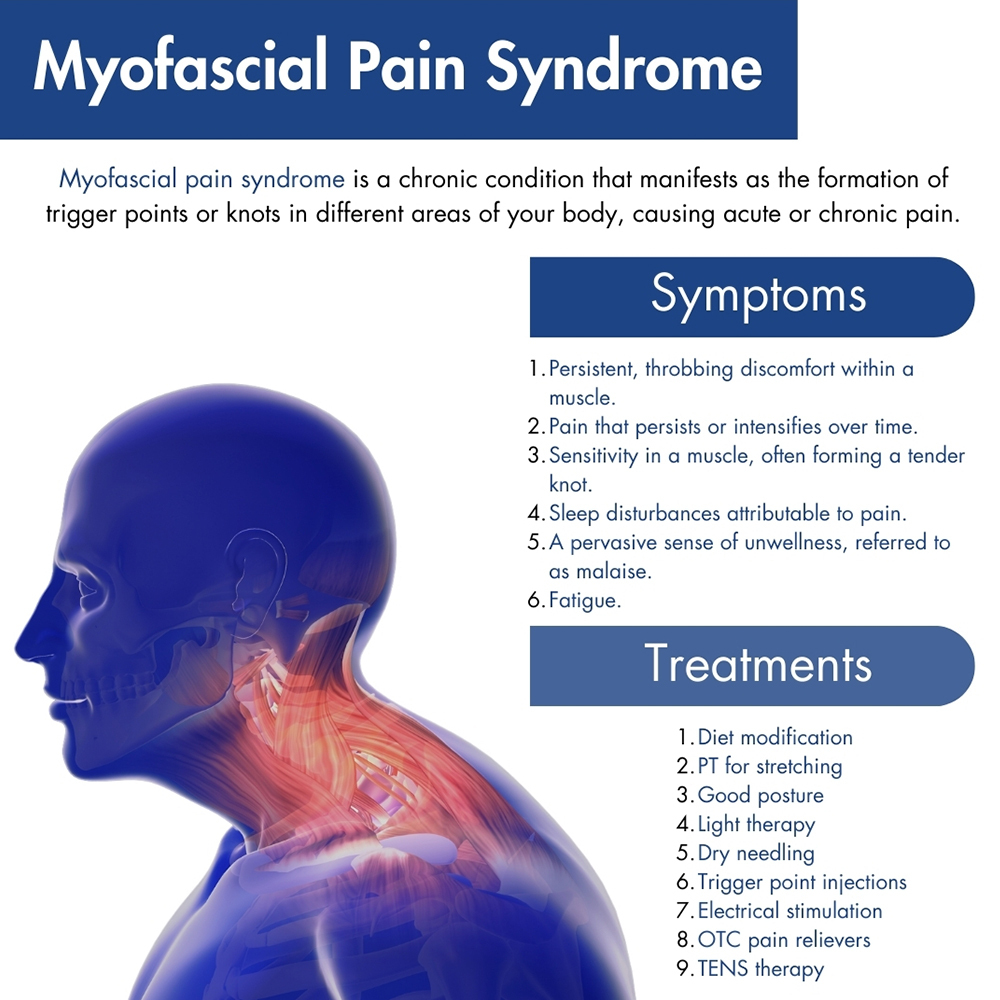We’re pleased to announce that Pain Physicians of Wisconsin is now Pro Spine Pain.
We’re pleased to announce that Pain Physicians of Wisconsin is now Pro Spine Pain.
 Experiencing pain due to an injury is one thing; however, feeling unexplained pain across various parts of your body is quite another. This may be indicative of myofascial pain syndrome, a condition characterized by the development of trigger points in your muscles. These localized points of tenderness can also lead to referred pain in other areas, posing challenges for accurate diagnosis. Reach out to Pro Spine & Pain in Wisconsin for a precise diagnosis and the necessary treatment to alleviate your discomfort and get your life back.
Experiencing pain due to an injury is one thing; however, feeling unexplained pain across various parts of your body is quite another. This may be indicative of myofascial pain syndrome, a condition characterized by the development of trigger points in your muscles. These localized points of tenderness can also lead to referred pain in other areas, posing challenges for accurate diagnosis. Reach out to Pro Spine & Pain in Wisconsin for a precise diagnosis and the necessary treatment to alleviate your discomfort and get your life back.
Myofascial pain syndrome is a chronic condition that manifests as the formation of trigger points or knots in different areas of your body, causing acute or chronic pain. This pain can impede your movement and flexibility, significantly affecting your overall quality of life. For instance, myofascial pain syndrome may result in shoulder pain or neck pain.
The primary cause of these trigger points is damage to your fascia, the resilient connective tissue covering your muscles and organs. When this fascia becomes rigid and inflexible, it induces pain each time it undergoes stretching or pulling, which can occur with every muscle contraction. While occasional bodily discomfort is expected, persistent and intensifying pain is not a normal consequence of aging.
The myofascial pain may even originate in areas far removed from the active trigger point, leading to what is known as referred pain. For example, myofascial back pain in the lumbar spine may also contribute to muscle spasms in your neck or patellofemoral pain syndrome.
When a repetitive movement leads to muscle injury, it places stress on those muscles, potentially resulting in the development of trigger points. Furthermore, non-physical factors such as stress and anxiety can also contribute to this condition. If your occupation involves frequent lifting and carrying of heavy objects, you may experience persistent deep muscle pain.
Poor posture is another factor contributing to myofascial muscle pain. Adopting positions like hunching over your desk or cradling your cell phone against your shoulder can negatively impact your muscles. The pain management specialists at Pro Spine & Pain in Wisconsin can identify activities that might be causing your pain. A skilled doctor can recognize myofascial pain and provide guidance on the most effective myofascial pain therapy, addressing the pain and resolving trigger points.
Indications of myofascial pain syndrome include:
Experiencing muscle pain on occasion is extremely common and normally nothing to worry about. However, if your muscle discomfort persists despite attempts at rest, massage, and self-care, it is advisable to schedule an appointment with your healthcare provider. The pain management experts at Pro Spine & Pain will give you a thorough examination and set you up with a personalized treatment plan.
Myofascial pain syndrome is often mistakenly identified as fibromyalgia due to their similar symptoms. However, myofascial pain is characterized by a few localized trigger points, while fibromyalgia exhibits multiple generalized trigger points. Additionally, individuals with myofascial pain are more likely to experience referred pain compared to those with fibromyalgia.
Other symptoms that are more prevalent in fibromyalgia and less common in myofascial pain syndrome include:
Diagnosing myofascial pain syndrome can be challenging, especially when back pain may be linked to other issues like a pinched nerve in your neck or a labral tear. Your Wisconsin pain specialist must pinpoint the precise location of your trigger point before recommending appropriate myofascial pain syndrome treatment. The initial step involves a thorough physical exam and systematic review of your symptoms and experiences. For instance, pain will result when pressure is applied to the site of a trigger point.
This examination will be complemented by additional diagnostic tests, including:
Furthermore, your doctor may propose supplementary tests to explore other potential causes of your discomfort, such as:
Addressing myofascial pain typically revolves around alleviating trigger points in the soft tissue of the body.
Your doctor may suggest lifestyle adjustments and various myofascial pain treatments, including:
Initiating your myofascial pain relief journey begins with a visit to a pain management clinic, offering a range of treatment options. Contact the professionals at Pro Spine & Pain today for a consultation with a compassionate and skilled physician.

Thomas Stauss, MD, completed both his undergraduate and medical studies at the esteemed University of Wisconsin in Madison. Dr. Stauss values having access to a wide array of cutting-edge treatment options, ensuring effective relief for his patients' discomfort and a significant enhancement in their quality of life. More specifically, he specializes in utilizing implanted devices to manage chronic pain. Dr. Stauss’s primary objective is to uphold the dignity of each patient while delivering ethical and professional services.
More about Dr. Stauss